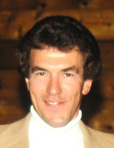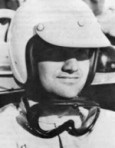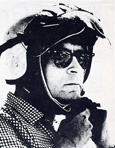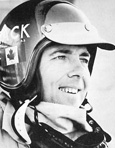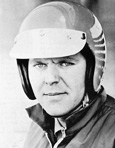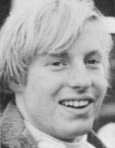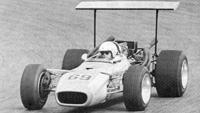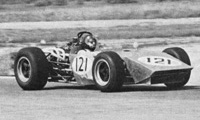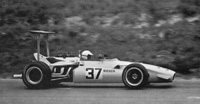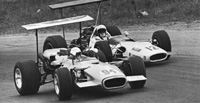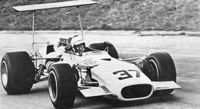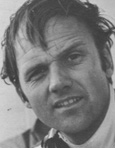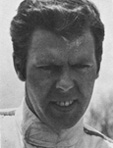
Introduction
From 1961 to 1968 the Canadian Driving Championship was based on events for sports cars. There was no prize money for being Canadian Driving Champion or as 1968 Canadian Champion Horst Kroll stated, "a busted trophy and a handshake" is all he received. That all changed in 1969 as two new developments were announced. The first was that the Canadian Championship would be contested by Formula A cars. The second development was that, for the first time, there would be prize money with Gulf Canada being the title sponsor of the series. Each event had a $1500 purse with a total of $45,000 on the line for the season including the points fund and other contingencies. The Canadian Race Drivers Association contributed $10,000 to the total.
By 1969 Formula A was a formula that was gaining popularity around the world with separate series in the Unites States, Great Britain, Australia, New Zealand and South Africa. It was also known as F5000. The class was created in 1965 by the Sports Car Club of America (SCCA), along with two other new formulas: Formula B and Formula C. The original specs for Formula A specified 3-litre racing engines. The specs for Formula A matched those of Formula 1. Formula B allowed up to 1.6 litre stock block engines and Formula C for 1.1 litre engines. Formulas B and C started to gain popularity but there were very few Formula A cars in 1965 - 1966. A professional series for the new Formulas began in the USA in 1967 with the announcement of the five-race SCCA Grand Prix Championship. Few Formula A cars appeared and the series was dominated by the lighter, faster Formula B cars. The breakthrough for Formula A came in 1968 when the SCCA allowed production-based, pushrod engines of up to 5 litres. This allowed the popular 305 cubic inch North American engines to be used.
The change in engine spec grabbed the interest of the chassis manufacturers and specially-built Formula A chassis began to appear. The SCCA Professional series visited Mosport in 1968 with American Lou Sell taking the victory in his Eagle-Chevrolet. That race also included Canadians Al Pease and Bill Brack in Formula A. The Formula B class included several more Canadians: Peter Broeker, Don Merriman, Brian Robertson, Brian MacDonald, Max Castleberg, John Jachtschute, Fritz Hochreuter, Eligio Sicconolfi and Gerald Sellier.
With the world-wide expansion of Formula A, the Canadian Automobile Sports Club (CASC) decided that it was time that Canada joined in. There was some considerable debate about this decision within the Canadian racing community, as many people, especially in Quebec, felt that Formula B was the better way to go. The decision was made to go with Formula A, but the fields would also include cars in the Formula B and Formula C classes.
1969
Formula A Drivers - 1969 Season
May 18, 1969: Mosport Park
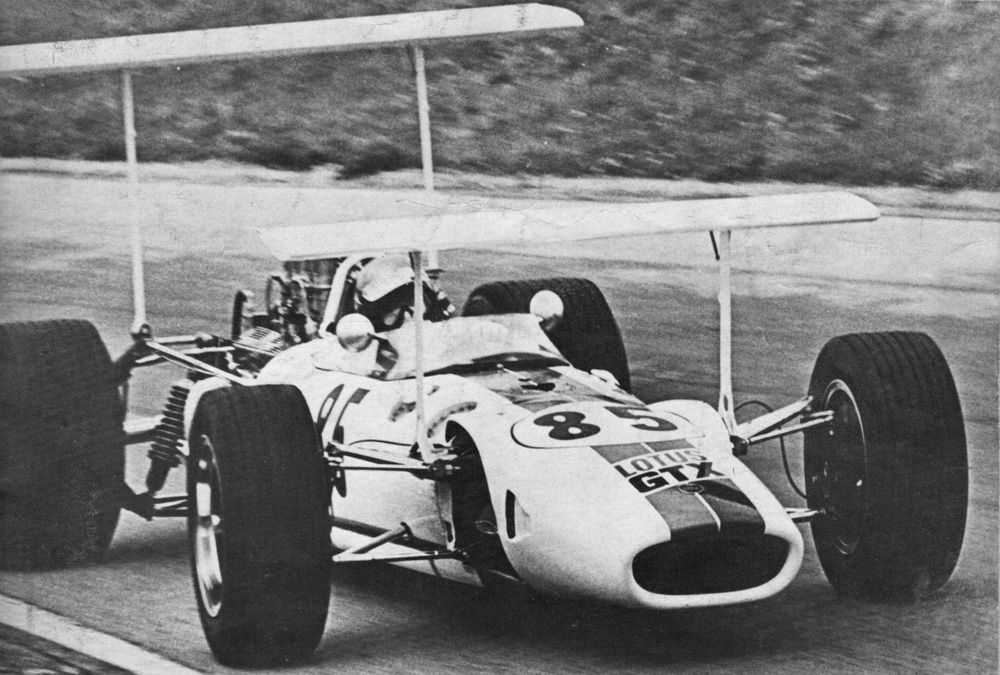
Eaton held a 40 second lead at one point, but Brack's engine began firing correctly and closed the gap. He was helped by the fact that Eaton's engine was having battery issues, causing a loss of power coming out of the corners. Eaton led until the second-last lap when, under pressure from Brack, he spun again in Moss corner. Once again, Bill Brack slipped past and this time took the win over Eaton by seven seconds. Al Pease came home in third. The top Formula B car was Craig Hill who finished fourth, driving a Lotus 61-Ford.
May 25: Le Circuit Mont-Tremblant
Five of the Formula A cars from round one were on hand for round two at Mont-Tremblant. Tony Simms' Kiki Mk 6A was not repaired in time following his crash at Mosport. George Eaton set the fastest time for the second consecutive race and jumped out in the lead at the drop of the green flag. Al Pease had transmissions problems on the grid and rolled his car back to the paddock before the start. Eppie Wietzes was running in second place on lap five when his car suffered the second wing failure in as many races, necessitating a pit stop to have it removed. Bill Brack experienced engine troubles and retired from the race on lap 23.
George Eaton went on to dominate the race, leading all forty laps and lapped the entire field. Horst Kroll finished second, one lap back. Wietzes, driving most of the race wingless, crossed the finish line in third, two laps down to Eaton. The top Formula B driver was Al Justason in a Brabham B21 who finished in fourth place overall.
Eaton was disappointed by the lack of competition, telling reporters, "I came here to race, not drive around the track." He also recognized that luck was on his side due the problems suffered by the other Formula A drivers. Eaton noted that, "At the 18th lap my engine started to heat up and if Bill Brack had been running hard he could have won. I couldn't have stood the pressure with an overheated engine for better than half the race."
A Short Break Before Heading West
During the four week break in the series the drivers kept busy. Eppie Wietzes obtained a new wing to prevent further problems. Bill Brack damaged his car while practicing for an SCCA Continental Formula A race in Colorado. The damage necessitated a trip to Indianapolis for the Lotus staff to assess and repair the damage. Al Pease sent his car to a specialty shop in California to have a new wing fitted and to have some handling adjustments made.
June 22: Speedway Park
The Gulf Canada Series took a west coast swing for the next three races starting at Speedway Park in Edmonton (track also known as Edmonton International Raceway) on June 22. Only three Formula A cars started this race. Al Pease would have been the fourth but his engine developed an oil leak during the warm-up and he withdrew the car, leaving eleven cars to start the race. George Eaton had withdrawn from the series to focus his efforts on the SCCA Continental Formula A series.
Wietzes solved his rear wing woes and dominated the weekend by being fastest qualifier and leading the entire race. He finished 59 seconds ahead of second place finisher Horst Kroll and more than a lap ahead of Bill Brack in third. Peter Broecker finished in fourth and was the top finishing Formula B driver.
June 29: Westwood Racing Circuit
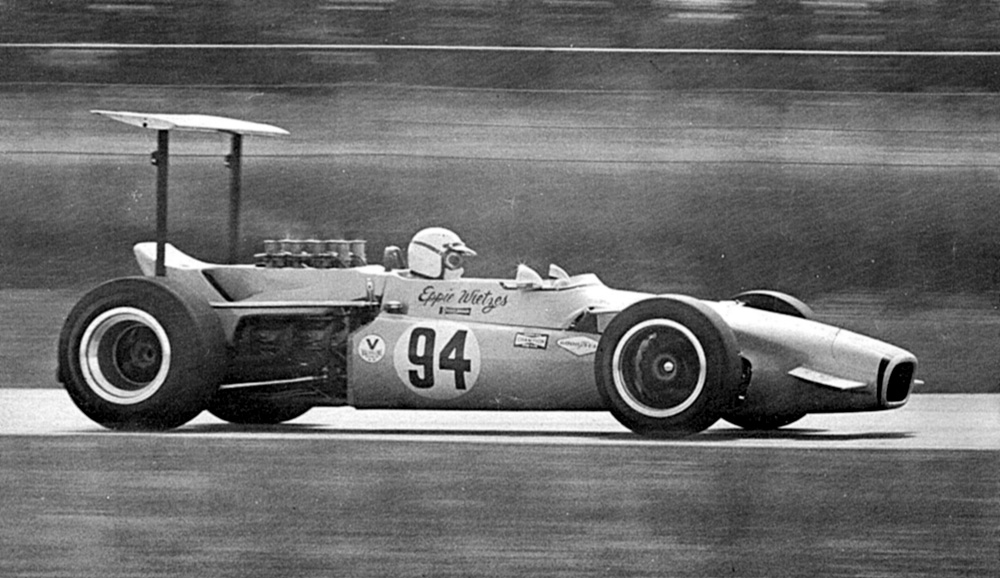
The rain stopped before Sunday's race and the track had started to dry as the eleven starters lined up on the grid. Bill Brack was the only driver to change to dry weather tires, the others opting for wets. Eppie Wietzes got a good jump at the green flag, took the early lead and built up his advantage with each lap. Brack was running a strong second but dropped out the race on lap 37 with a broken rocker arm. Wietzes led every lap on his way to his second consecutive victory. Horst Kroll finished second, 90 seconds behind Wietzes. David Ogilvie finished in third, the highest Formula B car.
The win gave Wietzes the lead in the Gulf Series standings. About 11,500 fans were on hand at Westwood to watch the 56 lap race.
July 13: MacDonald Airport
The Gulf Series moved east for round five at MacDonald Airport in Manitoba. On the off-weekend between Westwood and MacDonald, Eppie Wietzes raced in the SCCA Continental series at Pacific Raceways where his car was damaged in a first-lap accident. His crew scrambled to repair the car for the MacDonald race. Bill Brack and Horst Kroll also competed in the Pacific Raceways event. Maurice McCaig was entered with a McLaren M10A but it's not clear if he showed up. Horst Kroll was the fastest qualifier for the MacDonald Gulf Series race, taking over five seconds off the track record. The bumpiness of the track was a factor throughout the weekend, causing Kroll to lose his wing during the Saturday sessions. This incident led him to decide to go wingless for the race, on the assumption it wouldn't last the 61 laps.
Kroll took the early lead in front of 5,000 fans and led lap one but Eppie Wietzes passed him on lap two and dominated the rest of the race. He lapped the entire field, including Kroll at one point. Wietzes eased off and Kroll regained his lap but never gained any more ground on the leader. Kroll came home in second, nearly a full lap back. In third was Craig Hill, the top Formula B competitor. Bill Brack dropped out of the race on lap 17 due to suspension failure caused by the track's roughness.
Commenting on the rough track after the race, Wietzes told reporters, "I'll never drive here again. This course is too tough on a car."
August 17: Harewood Acres
The Gulf Canada Series moved back east for the remaining four races, starting with the airfield circuit at Harewood Acres near Jarvis, Ontario. Three more Formula A cars had appeared on the grid. Brian Weightman, Nat Adams and Alfred Ruys de Perez had joined the series, all driving Canadian-built Chinooks.
Eppie Wietzes led the first lap but Bill Brack passed him for the lead on lap three. Crashes and bad luck took out many of the top contenders. Horst Kroll and Al Pease had a huge crash while battling for second place. Pease's car was launched over Kroll's, ripping off a wheel and damaging the suspension on Pease's car. Pease was out but Kroll managed to drive back to the pits for repairs. The lengthy stop to fix suspension pieces put him out contention. All the new Chinooks dropped out with mechanical problems. Eppie Wietzes lost a wheel near the half-way mark and did not finish. These retirements allowed Bill Brack to build up a three lap lead. On the lap 54 of the 55 lap race a suspension arm snapped on Brack's car. Brack continued on in the race dragging the left-rear wheel. The attrition had allowed the Formula B car of David Ogilvy to move into second place and Kroll had worked his way back to third. Brack's last lap was at a 30 mph average snail's pace compared to earlier laps that averaged 108 mph. Ogilvy and Kroll passed him twice but did not have time to make up the last lap. Brack limped his car across the finish line to victory, cheered on by the approximately 4,000 in attendance.
The points battle had tightened up after the Harewood race. Points leader Eppie Wietzes had his lead cut to only 1 point over second place Horst Kroll. Brack's win moved him into third in the points. The top four in points were Eppie Wietzes, 31; Horst Kroll, 30; Bill Brack, 22; George Eaton, 15.
Between Rounds Six and Seven
There were more developments in the weeks between the Harewood race and the next at Trois-Rivieres. Bill Brack badly damaged his Lotus GTX at Lime Rock, Connecticut in an SCCA Continental Formula A race. The car would take six weeks to repair which was past the end of the season. Meanwhile, Al Pease had run into sponsor problems and had his car for sale. Brack took the opportunity and made a deal to rent Pease's car for the remainder of the season.
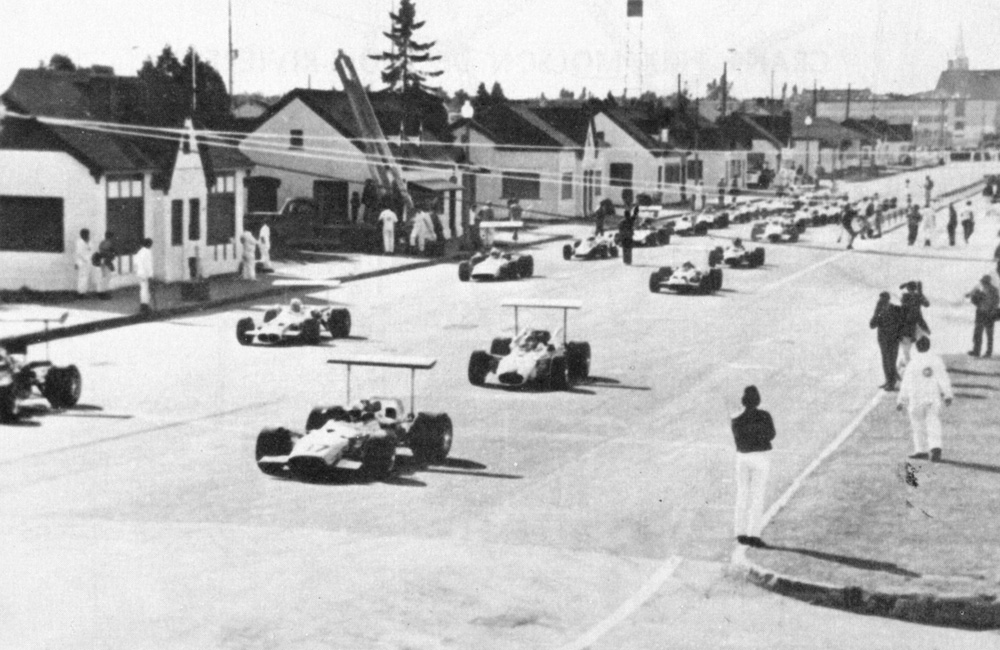
photo by Robert Sauvageua
The Gulf Canada Series made its first-ever visit to a street circuit for round seven in Trois-Rivieres, Quebec. Eppie Wietzes had a trouble-filled weekend starting with practice on Saturday. While setting fastest laps in practice, the car's drive shaft broke. His crew worked overnight, getting it ready for morning. In Sunday morning practice he broke the gear shift. Again, the crew went to work and had his Lola T142 ready for the race.
The 18,500 fans in attendance saw pole-sitter Horst Kroll jump out into the early lead. Unfortunately, it didn't last long as he slid off the track on the first lap and into a steel barrier heavily damaging the left side of his car. Bill Brack took advantage of Kroll's accident and took over the lead. Wietzes' bad luck continued as his fan belt came loose and caused the engine to over-heat. Brack continued to lead until he was taken out by a broken suspension on lap 52. This handed the lead to American Rex Ramsey, driving a LeGrand Mk11-Chevrolet, who led the rest of the way to win the 60 lap race. Don Merriman in a Formula B finished second. The race featured heavy attrition as only 11 of the 27 starters finished the race. Roger McCaig made his first appearance in a McLaren M10A-Chevrolet and finished in fifth.
At the time, the Grand Prix de Trois Rivieres was the only street circuit in North America. Some of the drivers were not impressed with the event. Horst Kroll told a Toronto Star reporter, "It's a bit dangerous. With trees, posts and curbs everywhere, you can't afford the slightest mistake." Bill Brack also had a strong opinion, "There are no high-speed corners, which is really the challenge in racing. You just gun it down one street, sort of stop and make a left or right turn, then gun it down the next street. It's a Mickey Mouse course."
September 28: Harewood Acres
The Gulf Series moved back to Ontario for the final two races, starting with a return visit to Harewood Acres for round eight. Pole-sitter Bill Brack took the early lead but spun during the first lap on the straight between turns two and three. Eppie Wietzes and Horst Kroll made it through but Nat Adams and David Ogilvy made contact each other and Ogilvey's car was launched over Adams'. The crash took out two other cars. Brack remained unscathed and he was able to get rolling again, about 25 seconds behind leader Wietzes.
Kroll was running in second when he had to pit for over-heating. By this time Brack had worked his way up to third and with Kroll's problems, he inherited second place. That was the final finishing order; Wietzes took the win, with Brack second. Kroll had managed to move back up into fifth. Other Formula A cars in the field included Brian Weightman and Alfred Ruys de Perez who both were driving Chinooks and both dropped out after hitting hay bales. The other Formula A in the field was Tony Simms, who finished seventh after pitting to remove a loose wing. The Formula B cars fared well again with Don Merriman and Al Justason finishing third and fourth respectively.
The victory increased Wietzes lead in the points battle. He now had 40 points; Kroll was second with 32 points and Brack third with 28. Wietzes had essentially wrapped up the points championship but Kroll was still mathematically in the hunt.
October 14: Mosport Park
The final race in the 1969 Gulf Canada Series was held under threatening skies. Horst Kroll started from the pole position with Bill Brack in second. Wietzes went with intermediate rain tires and Kroll chose rain tires. Wietzes took the lead on the first lap and, despite spinning out on oil in corner five late in the race, went on to lap everyone except Kroll. Bill Brack finished third, one lap behind.
Hamilton Vose was a Formula A entrant in a Surtees TS5-Chevrolet but he did not start the race.
The win gave Wietzes the overall victory as points champion in the 1969 Gulf Canada Series for the Canadian Road Racing Championship. He could have played it safe and drove a conservative race to maintain his points lead. After the race he told reporters, "I never had a thought about merely running to finish. When you start to goof around like that, you get into more trouble than if you're charging."
Craig Hill was the Formula B champion.
| Date | Driver | Track |
|---|---|---|
| May 18 | Bill Brack | Mosport Park |
| May 25 | George Eaton | Le Circuit Mont Tremblant |
| June 22 | Eppie Wietzes | Speedway Park |
| June 29 | Eppie Wietzes | Westwood Racing Circuit |
| July 13 | Eppie Wietzes | MacDonald Airport |
| August 17 | Bill Brack | Harewood Acres |
| September 14 | Rex Ramsey | Grand Prix de Trois Rivieres |
| September 27 | Eppie Wietzes | Harewood Acres |
| October 14 | Eppie Wietzes | Mosport Park |
| Pos | Class | Driver | Points |
|---|---|---|---|
| 1 | A | Eppie Wietzes | 49 |
| 2 | A | Horst Kroll | 38 |
| 3 | A | Bill Brack | 32 |
| 4 | B | Craig Hill | 17 |
| 5 | A | George Eaton | 15 |
| 6 | B | Don Merriman | 13 |
| 7 | B | David Ogilvy | 10 |
| 8 | A | Rex Ramsey | 9 |
| 9 | B | Al Justason | 8 |
| 10 | A | Tony Simms | 6 |
1969 Photo Gallery
There was another spirited discussion on the future of the Canadian Championship at the CASC annual general meeting. The Quebec members again brought up the issue of changing the championship to Formula B. In the end, it was decided to stay with Formula A as the premier class.
A significant rule change was made over the winter - the high wings would no longer be allowed. For the 1970 season the cars would use the more traditional, low-mounted wing. Gulf increased their support, with each racing now offering a $3000 purse.
Eppie Wietzes' team, Formula Racing, owned by Jim and Joan Clayton made the decision in the off-season to switch from a Lola chassis to a McLaren M10B. Wietzes' car was sold to Tony Simms. Simms sold his Kiki to newcomer John Powell. Al Pease sold his car to stock car racer Serge Tessilon of Windsor, Ontario who converted it to a super modified to race at Delaware Speedway. Pease obtained a Brabham-Climax while Bill Brack purchased a new Lola.
1970
Formula A Drivers - 1970 Season
About 4000 fans were on hand at Harewood Acres for the opening event of the 1970 Gulf Canada Series. There were 23 cars on the starting grid, including seven Formula A machines. Eppie Wietzes started from the pole and took the lead on the first corner of the first lap and began building a large lead. By lap 21 of the 105 lap race he had lapped the entire field. Despite hitting a hay bale and damaging the front suspension on lap 29 he continued to increase his lead.
Roger McCaig dropped out of the race with engine problems. Bill Brack missed qualifying and started from the back of the field. He moved into third place on the second lap and was sidelined with rear suspension problems while running second on lap 46. Wietzes finished the race two laps ahead of second place Horst Kroll. Craig Hill in a Formula B was third.
After the race Wietzes commented on the hay bale incident, saying, "It made the car a bit difficult to handle and, in fact, my hands are very sore from pulling the wheel." He further commented on his dominating win, "I was hoping for more competition here. I didn't really have to push the car close to the limits."
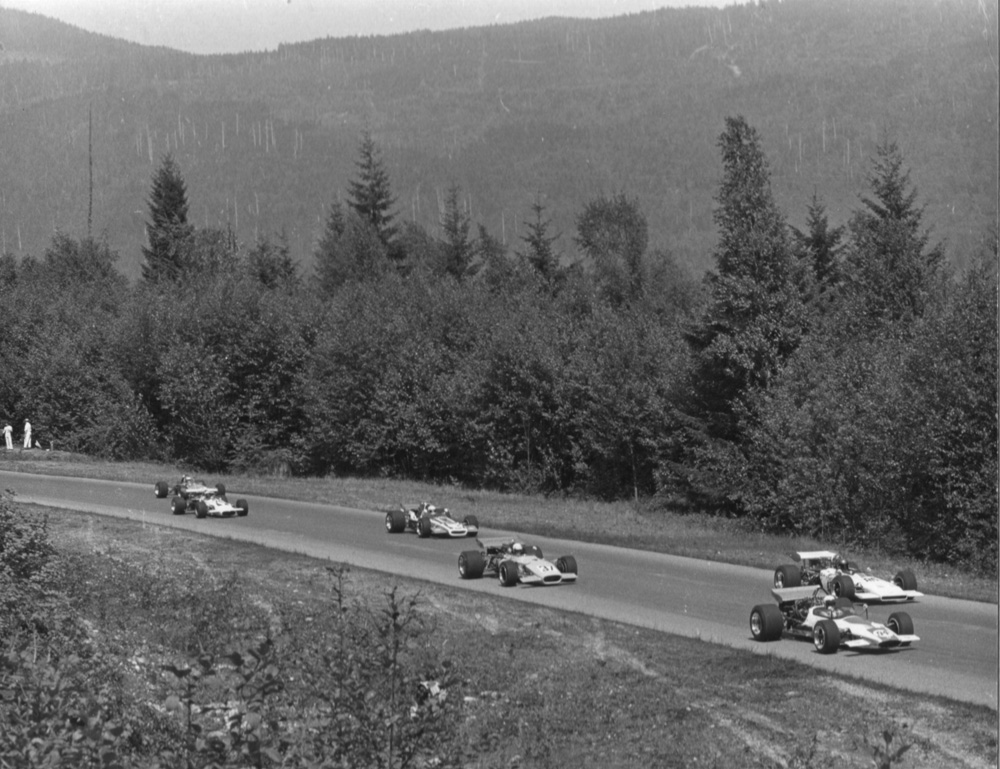
The series moved on to the Westwood Racing Circuit in Coquitlam, British Columbia for round two, the first of two races in western Canada. Bill Brack led the first five laps before being passed by Eppie Wietzes who went on to led the remaining laps.
Wietzes dominated again with a one lap victory over Horst Kroll. Bill Brack finished third despite blowing his engine about 200 yards from the finish line and coasting across.
June 14: Edmonton International Speedway
The Gulf Canada Series completed its two-race western Canada swing with a visit to Edmonton. Eppie Wietzes won again, despite changing engines before the race and installing one with 15 hours of running time already on it. Only about 400 spectators were on hand for the race. Horst Kroll missed this event after wrecking his car in an SCCA Continental Formula A race at Kent, Washington on June 7. His car was badly damaged after crashing into a sand-filled barrel that was used a course marker. He was hospitalized for 10 days in Seattle with head injuries.
The 100-mile race used the short 1.5 mile circuit at EIS, instead of the longer 2.5 circuit used by the Can-Am Series and had been used by the Gulf Series in 1969. Wietzes was critical of the short circuit in an off-season column for Canada Track & Traffic, saying, "All in all I think it was just ridiculous to run the A cars on such a short track."
July 1: Rockcliffe Airport
Round four was at the 2.2 mile circuit at the Rockcliffe Airport near Ottawa on July 1. The event was part of a Dominion Day celebration sponsored by the Department of the Secretary of State. Admission was free and as such, over 25,000 fans came out for the race. Horst Kroll was out of the hospital and his car was repaired in time for the Rockcliffe race. Al Pease made his first Gulf Series appearance of the season. He missed the first three races getting his car prepared. He had the engine problems sorted out and ran a successful shakedown race at Harewood the week prior. Ludwig Heimrath, Canadian Driving Champion in 1961 and 1964, joined the Gulf Series starting with this event after purchasing George Eaton's McLaren M10A. Heimrath had spent the 1968 and 1969 seasons racing on the USAC Championship circuit in the United States.
Many of the drivers were critical of the bumpy nature of the track. The event was meant as a test to gauge fan interest in running more events in the future and therefore organizers did not want to spend a lot of money on paving. The roughness of the track was immediately apparent when the cars took to the track for practice. The drivers found that hard braking caused the wheels to lock up and they experienced wheel spin while going through the gears. Numerous cars were damaged due to the rough surface, including Roger McCaig's McLaren M10A Formula A car which suffered broken engine mounts. A drivers' meeting was held to discuss possibly canceling the race. In the end, it was decided to carry on with a distance of 25 laps instead of the original 50. Some drivers withdrew their cars, including Jacques Couture and David McConnell.
Eppie Wietzes qualified on the pole with Bill Brack in second. Bill Brack did not even take the green flag. He had dry tires mounted and it began raining on the pace lap. He pitted to change to wet tires but the green flag was dropped while he was in the pits. Brack felt he would be too far behind, so he parked the car.
The race was won by Eppie Wietzes, his fourth in a row. The wet conditions saw many drivers spin, including Wietzes who briefly gave up the lead. Craig Hill, driving a Formula B car, finished second. Ludwig Heimrath, in his first outing in Formula A was third. Horst Kroll was fourth.
August 9: Harewood Acres
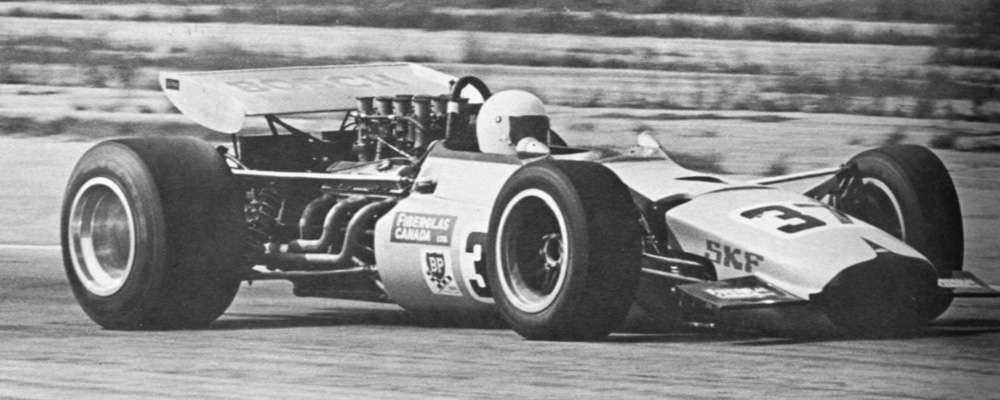
Ludwig Heimrath was unable to start the race after damaging his car in a crash during practice. Bill Brack took the early lead and battled with Eppie Wietzes until Wietzes retired with overheating problems on the seventh lap. Horst Kroll also had overheating problems and had to slow his pace to keep the engine temperature down. A piston problem took Bill Brack out of the race on the 42nd lap. Harvey Craig, Tony Simms and Frank Salem, drivers of the other Formula A cars in the race, also had problems and did not finish. This left Kroll as the only Formula A car to finish the race and he took his first Gulf Canada Series victory over Brian Robertson in a Formula B. In third was Bruce Jenson.
September 6: Trois-Rivieres
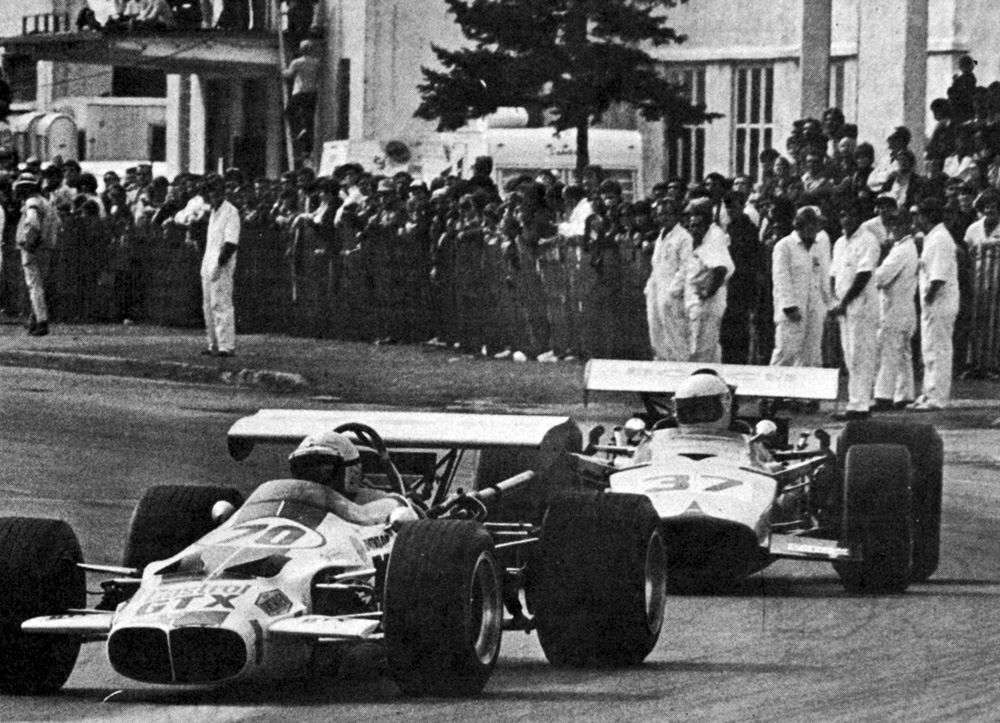
The win gave Wietzes his second consecutive title in the Gulf Canada Series for the Canadian Road Racing Championship.
October 11: Mosport Park
The seventh and final race of the 1970 season was at Mosport on October 11. Ludwig Heimrath crashed in practice and withdrew from the race due to his swollen wrist. The qualifying session was held in rainy conditions with Bill Brack taking the pole. This time it was Bill Brack's turn to dominate as he led from start to finish. Eppie Wietzes had battled with Brack at the beginning of the race but a broken timing chain forced Wietzes to retire on the seventh lap. Horst Kroll finished second, over a minute behind Brack. This result gave Kroll enough points to take second place in the Gulf Canada Series championship. Brack finish third inthe points. Craig Fisher made his first appearance in Formula A driving Tony Simms' Lola T142 and finished in sixth.
Craig Hill was top Formula B finisher in the race and repeated as the 1970 class champion.
Postscript
The Mosport race was the end of the Gulf Canada Series. Just prior to the 1970 CASC annual general meeting Gulf announced it would not renew its sponsorship for 1971. The Formula A vs Formula B argument raged again at the meeting with the somewhat tentative decision made that Formula A would be back for the 1971 season. In February of 1971 CASC announced that the Canadian Driving Championship would be contested by Formula B cars. Player's Tobacco stepped up to replace Gulf Canada as the title sponsor of the Canadian Championship. The new series would be called the Player's Challenge Series.
The biggest problem that faced the Gulf Series was the high cost of a Formula A car which led to low car counts and a lack of competition. A typical Formula A race car cost around $18,000, with other expenses bringing the start-up budget in range of $25,000 - $30,000. Winning a Gulf Series race netted a comparitively paltry $895. In contrast, the SCCA Continental Series paid $4,000 to win. The top drivers in the Gulf Series such as Wietzes, Brack and Kroll regularly raced in the SCCA Continental Series. Wietzes finished fourth in the 1970 points while not running the full schedule. All three of the drivers would have ran the SCCA series full-time but were pressured to race in the Gulf Series.
Eppie Wietzes, Bill Brack and Horst Kroll all continued to race their Formula A machines in the SCCA Continental Series in 1971.
| Date | Driver | Track |
|---|---|---|
| May 10 | Eppie Wietzes | Harewood Acres |
| May 31 | Eppie Wietzes | Westwood Racing Circuit |
| June 14 | Eppie Wietzes | Edmonton International Speedway |
| July 1 | Eppie Wietzes | Rockcliffe |
| August 9 | Horst Kroll | Harewood Acres |
| September 6 | Eppie Wietzes | Trois Rivieres |
| October 11 | Bill Brack | Mosport Park |
| Pos | Class | Driver | Points |
|---|---|---|---|
| 1 | A | Eppie Wietzes | 145 |
| 2 | A | Horst Kroll | 126 |
| 3 | B | Craig Hill | 103 |
| 4 | A | Bill Brack | 90 |
| 5 | B | Peter Broeker | 81 |
| 6 | B | Brian Robertson | 60 |
| 7 | B | Bruce Jensen | 40 |
| 8 | B | David Ogilvy | 29 |
| 9 | A | Tony Simms | 24 |
| 10 | B | Howard Cazaly | 22 |

